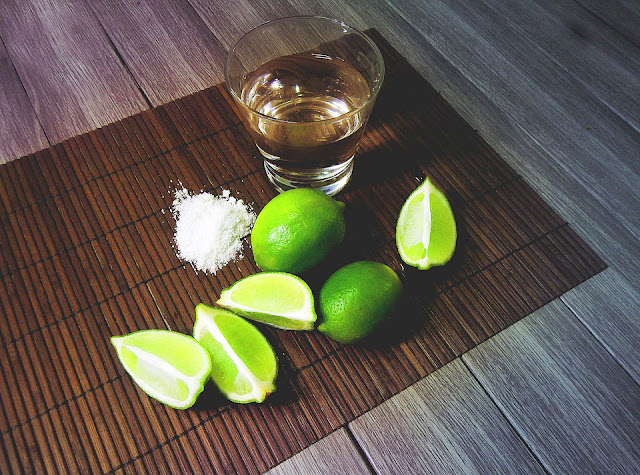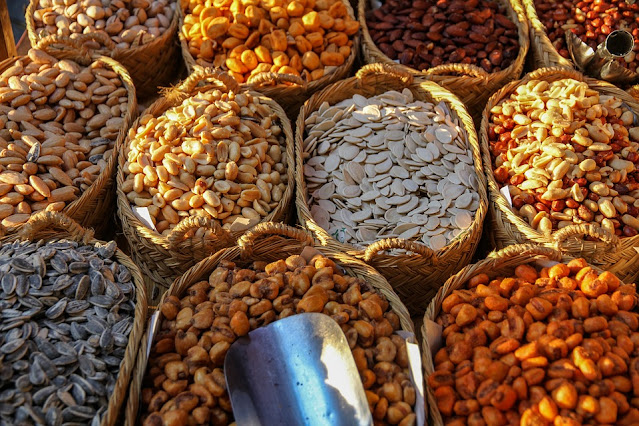Top 10 Facts About Tequila
Tequila, one of the world’s most popular drink, originated from Mexico and is often surrounded by various myths. Just the name of this beloved beverage brings up images of sunny and sandy Mexican beaches, sombreros, and folk songs. Wicked Spoon confessions brings to you 10 interesting facts about Tequila.
Tequila is tequila, not margarita: The first thing that comes to our mind when we think of tequila is salt and lime. But did you know, in Mexico, the homeland of tequila, they drink shots of tequilas without salt and lime. They prefer margaritas if they want to have salt and lime with tequila.
Tequila is plant-based: Many of us know tequila is plant-based. Contrary to the popular belief that tequila is made from cactus, tequila is actually made from the Agave plant, which belongs to the Lily family and not the Cactus family. Tequila is made from piña, the heart of blue agave. The blue agave plant requires specific growing conditions and may take 8-12 years to mature enough to produce tequila. Due to Mexican law restrictions, blue agave is cultivated only in the state of Jalisco and its surrounding areas and tequila should be distilled only in these areas.
Authenticity of tequila: If you are looking for authentic tequila, you have to look for tequila that contains 100% blue agave. Tequila is mixed with corn syrup for commercial purposes. Tequila that contains less than 100% blue agave is known as Mixto, which will give you almost the same buzz as tequila. So check the label next time to ensure that you are buying the original tequila.
Tequila - what’s in a name: The name “tequila” can be used only if the drink is distilled from blue agave grown in the Jalisco region. The government of Mexico has exclusive rights over the name ‘tequila’. Therefore, any other similar drink produced in other places is not the real thing and the producers of such drinks can be sued if they attempt to sell it under the name ‘tequila’.
Tequila is wormless: People often think tequila bottles contain worms. However, Mexican law prohibits worms in tequila bottles. The worm/gusano, which is the larvae of a moth that lives on the agave plant may be present in mezcal, another popular drink made from agave. Technically, all tequila is mezcal as all mezcal is produced from different types of agave plants. But not all mezcal is tequila, as tequila is made only from blue agave.
Flavors of tequila: Like most alcoholic drinks, tequila too has various flavors. The state of Jalisca, where agave plants are grown are rich in red volcanic soil. The blue agave grown in the highlands and lowlands of the Jaliscan plain has mildly varying flavors. Tequila distilled from the highland is fruitier and has a floral quality, whereas tequila produced from the valley is notable for its earthy aroma and spice.
History of tequila: Agave has been cultivated by the Aztec civilization for roughly 9000 years now and pulque, the predecessor of tequila was discovered by them before 1,000 years ago. The Aztecs discovered pulque when current from lightning cooked the inside of agave plant and the juice seeped out. The Aztecs believed that tequila is gift from the gods that opened communication between humans and gods. Infact, the Aztecs reserved this drink for priests and ritual practices.
Production of tequila: The United States seems to be the major consumer of tequila as more than 70% of the final product is exported to the USA and 50 million liters of tequila are consumed in the USA every year. It is also surprising that over 60% of the profits made from tequila go to countries other than Mexico.
Categories of tequila: Tequila can be classified into three main categories based on its age.
• Blanco—new and bottled within two months of distillation.
• Reposado—aged between 2-13 months.
• Anejo—aged between 1-3 years.
The other two additional categories of tequila include Joven or Oro, a combination of Blanco and Reposado and Extra Anejo, aged between 3-5 years in oak barrels.
Some of the top brands of Tequila are Tres Cuatro Y Cinco, Gran Dovejo Resposado, CasaDragones, Don Julio Real, Gran Patron Burdeos and Partida Elegante.
Benefits of tequila: Besides being a great pick-me-up for taste, tequila has a slew of health benefits as well. It helps reduce blood sugar and fights cholesterol level. It helps in weight loss and was used to treat common colds. Tequila can also reduce pain levels and if consumed in moderation can reduce the risk of diabetes and dementia.
So, next time you are at a party, impress your friends with these fun facts about tequila, and make sure you do it before they have those shots of tequila, lest they get caught in the buzz and forget the details:)
Disclaimer- This blog caters to audience above 25 years of age.
Alcohol consumption is injurious to health, drink responsibly, don't drink and drive
Tequila is tequila, not margarita: The first thing that comes to our mind when we think of tequila is salt and lime. But did you know, in Mexico, the homeland of tequila, they drink shots of tequilas without salt and lime. They prefer margaritas if they want to have salt and lime with tequila.
Tequila is plant-based: Many of us know tequila is plant-based. Contrary to the popular belief that tequila is made from cactus, tequila is actually made from the Agave plant, which belongs to the Lily family and not the Cactus family. Tequila is made from piña, the heart of blue agave. The blue agave plant requires specific growing conditions and may take 8-12 years to mature enough to produce tequila. Due to Mexican law restrictions, blue agave is cultivated only in the state of Jalisco and its surrounding areas and tequila should be distilled only in these areas.
Authenticity of tequila: If you are looking for authentic tequila, you have to look for tequila that contains 100% blue agave. Tequila is mixed with corn syrup for commercial purposes. Tequila that contains less than 100% blue agave is known as Mixto, which will give you almost the same buzz as tequila. So check the label next time to ensure that you are buying the original tequila.
Tequila - what’s in a name: The name “tequila” can be used only if the drink is distilled from blue agave grown in the Jalisco region. The government of Mexico has exclusive rights over the name ‘tequila’. Therefore, any other similar drink produced in other places is not the real thing and the producers of such drinks can be sued if they attempt to sell it under the name ‘tequila’.
Tequila is wormless: People often think tequila bottles contain worms. However, Mexican law prohibits worms in tequila bottles. The worm/gusano, which is the larvae of a moth that lives on the agave plant may be present in mezcal, another popular drink made from agave. Technically, all tequila is mezcal as all mezcal is produced from different types of agave plants. But not all mezcal is tequila, as tequila is made only from blue agave.
Flavors of tequila: Like most alcoholic drinks, tequila too has various flavors. The state of Jalisca, where agave plants are grown are rich in red volcanic soil. The blue agave grown in the highlands and lowlands of the Jaliscan plain has mildly varying flavors. Tequila distilled from the highland is fruitier and has a floral quality, whereas tequila produced from the valley is notable for its earthy aroma and spice.
History of tequila: Agave has been cultivated by the Aztec civilization for roughly 9000 years now and pulque, the predecessor of tequila was discovered by them before 1,000 years ago. The Aztecs discovered pulque when current from lightning cooked the inside of agave plant and the juice seeped out. The Aztecs believed that tequila is gift from the gods that opened communication between humans and gods. Infact, the Aztecs reserved this drink for priests and ritual practices.
Production of tequila: The United States seems to be the major consumer of tequila as more than 70% of the final product is exported to the USA and 50 million liters of tequila are consumed in the USA every year. It is also surprising that over 60% of the profits made from tequila go to countries other than Mexico.
Categories of tequila: Tequila can be classified into three main categories based on its age.
• Blanco—new and bottled within two months of distillation.
• Reposado—aged between 2-13 months.
• Anejo—aged between 1-3 years.
The other two additional categories of tequila include Joven or Oro, a combination of Blanco and Reposado and Extra Anejo, aged between 3-5 years in oak barrels.
Some of the top brands of Tequila are Tres Cuatro Y Cinco, Gran Dovejo Resposado, CasaDragones, Don Julio Real, Gran Patron Burdeos and Partida Elegante.
Benefits of tequila: Besides being a great pick-me-up for taste, tequila has a slew of health benefits as well. It helps reduce blood sugar and fights cholesterol level. It helps in weight loss and was used to treat common colds. Tequila can also reduce pain levels and if consumed in moderation can reduce the risk of diabetes and dementia.
So, next time you are at a party, impress your friends with these fun facts about tequila, and make sure you do it before they have those shots of tequila, lest they get caught in the buzz and forget the details:)
Disclaimer- This blog caters to audience above 25 years of age.
Alcohol consumption is injurious to health, drink responsibly, don't drink and drive














Very nice well written
ReplyDeleteInformative.
ReplyDeleteGood one.... Informative too
ReplyDeleteLike the medicinal properties
ReplyDeleteGreat info
ReplyDeleteWow... Amazing.... Great way of narrating all info
ReplyDeleteMarvelous..... so interesting facts
ReplyDeleteheyyy I liked the info ...
ReplyDelete